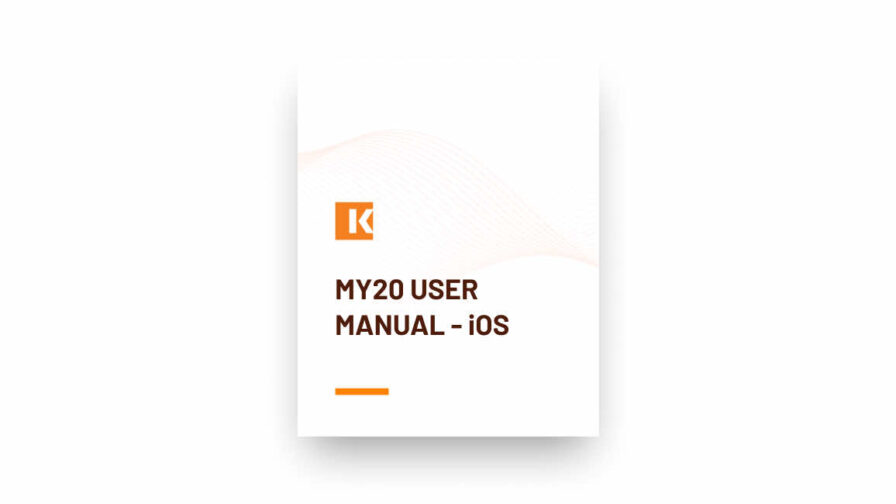Strategies for Effective Enterprise Fleet Management in Trucking

Strategies for Effective Enterprise Fleet Management in Logistics
Managing a large fleet of vehicles goes beyond scheduling vehicles and drivers. It involves strategically maximizing efficiency, cutting costs, and improving safety overall. Whether new to the field or seeking to improve current operations, manage assets, and streamline operations this blog will cover critical components for successful enterprise fleet management.
Explore practical tips and innovative solutions to overcome common business fleet management challenges. As well as learn how to use advanced telematics technology, implement robust maintenance routines, and adopt sustainable practices.
Understanding Enterprise Fleet Management
Fleet management is an in-depth approach to optimizing commercial vehicles, such as trucks, buses, and vans, to increase efficiency, ensure compliance, and reduce costs with industry regulations. It involves vehicle maintenance, fuel management, route planning, driver management, and safety compliance. Fleet managers use data from GPS devices, onboard sensors, and telematics to monitor and analyze vehicle and driver performance. This data-driven approach to fleet management allows for informed decision-making to improve efficiency, reduce fuel usage, and ensure vehicle safety.
Businesses’ usage of fleet management streamlines the operations of their vehicles, which is critical for reducing costs and maximizing efficiency. This allows companies to monitor and control many different expenses related to vehicle ownership, such as fuel consumption, maintenance, insurance, and compliance with regulations. Fleet management systems provide knowledge into vehicle performance and driver behaviors as well, This helps businesses to optimize routes, decrease fuel costs, and improve safety. This approach is crucial for industries like food delivery, emergency services, construction, and public transportation to maintain a productive workflow.
Key Components of Fleet Management Systems
Overview of Enterprise Fleet Management Software and Its Functionalities
Enterprise fleet management software oversees many different aspects of managing a fleet of vehicles, that include maintenance of scheduling, fuel management, route optimization, driver behavior monitoring, and regulatory compliance. The software usually includes functionalities such as GPS tracking, telematics, data analysis, reporting tools, and driver management systems.
How Software Solutions Integrate with Existing Business Fleet Management Systems
Fleet management software incorporates business systems through application programming interfaces (APIs) and also uses data synchronization tools as well. This integration allows for seamless data flow between software and other business systems, such as enterprise resource planning (ERP) systems, customer relationship management (CRM) platforms, and accounting software. Synchronizing this data across platforms allows businesses to achieve a connected view of their fleet operations, streamline workflows, and enhance decision-making processes.
Benefits of Using Dedicated Software for Fleet Tracking, Maintenance, and Compliance
- Enhanced Efficiency: Automation of routine tasks like scheduling maintenance, tracking fuel usage, and optimizing routes leads to improved operational efficiency.
- Cost Reduction: By monitoring fuel consumption, identifying cost-effective routes, and scheduling timely maintenance, businesses can significantly reduce operational costs.
- Improved Safety: Monitoring driver behavior and vehicle health helps in implementing safety protocols, reducing accidents, and ensuring compliance with safety regulations.
- Regulatory Compliance: The software helps maintain accurate records and ensures compliance with local, state, and federal regulations, avoiding fines and penalties.
- Data-Driven Decisions: Access to comprehensive data and analytics allows fleet managers to make informed decisions, identify inefficiencies, and implement best practices.
Strategic Planning for Fleet Management
Developing a Fleet Management Strategy that Aligns with Business Goals
- Aligning with Organizational Objectives: The strategy should be closely linked to broader business goals such as cost reduction, operational efficiency, sustainability, and overall operational excellence.
- Understanding Unique Needs: Tailor the strategy to the specific challenges and opportunities of the organization.
- Defining Key Components: These include optimal fleet size and composition, maintenance schedules, driver management, telematics integration, and regulatory compliance.
Steps to Develop the Strategy:
- Identify Goals: Determine the specific objectives like reducing operational costs and improving efficiency.
- Assess Current Fleet: Analyze vehicle usage, maintenance history, and associated expenses to identify areas for improvement.
- Implement Best Practices: Employ predictive maintenance, optimize routes, and focus on driver training and monitoring.
- Leverage Technology: Use advanced tools like GPS and AI for data-driven decision-making and real-time insights.
- Monitor and Adjust: Regularly assess the strategy’s performance and make necessary adjustments based on technological advancements and industry trends.
Case Studies of Successful Strategic Fleet Planning in Large-Scale Operations
Case Study 1: Konexial Implementation
Challenges:
- Unreliable telematics platform
- Poor customer service and tech support
- Lack of visibility into truck information and driver habits
Solutions:
- Implemented Konexial’s My20 ELD + Fleet system.
- Features included GPS tracking, HOS compliance logs, engine diagnostics, DVIR, commercial navigation, and more.
- Provided customizable solutions and a detailed implementation plan with onboarding and training resources.
Results:
- Integrated telematics, fleet management, and video on a unified dashboard.
- Accurate driver behavior measurement with driver scorecards.
- Enhanced safety with AI-powered dash cameras.
- Achieved a 90% reduction in risky driving behaviors and improved decision-making with accurate data and reporting.
Case Study 2: Technology Integration
Challenges:
- Managing over 800 moving assets across 200 locations.
- Outdated technology with ongoing connectivity issues.
- Limited reliability and customer support from the previous provider.
Solutions:
- Transitioned to a new technology provider, Konexial, offering robust features and easy-to-install hardware.
- Customizable and scalable fleet and video management system.
- Comprehensive support with a detailed implementation plan and on-demand training resources.
Results:
- Enhanced operational efficiency with ONE Dashboard for telematics, fleet management, and video.
- Driver Scorecards for non-biased performance evaluation.
- Real-time driver behavior monitoring and coaching with AI-powered dash cameras.
- Improved safety and reduced costs through predictive maintenance and optimized routing.
Operational Efficiency and Cost Reduction | Techniques for Optimizing Routes and Reducing Fuel Consumption
Traffic Data Integration:
- Live Traffic Updates: Using GPS and telematics systems to provide real-time traffic information helps avoid congested routes.
- Predictive Traffic Analysis: Historical traffic data and predictive analytics can anticipate traffic conditions and suggest optimal routes.
Weather Data Integration:
- Weather Forecasts: Integrating weather data to avoid routes with severe weather conditions can enhance safety and fuel efficiency.
- Adaptive Routing: Adjusting routes in real-time based on changing weather conditions to ensure timely and safe deliveries.
Fuel-Efficient Driving Practices:
- Speed Control: Encouraging drivers to maintain optimal speeds for fuel efficiency.
- Reducing Idling: Minimizing idle time through training and automatic engine shutdown features.
- Smooth Driving: Promoting smooth acceleration and braking.
Fuel Purchase Optimization:
- Fuel Card Programs: Utilizing fuel cards that offer discounts and track fuel purchases.
- Fuel Network Optimization: Planning routes that include stops at fuel stations with the lowest prices.
- Maximizing Load Capacity: Ensuring vehicles are fully loaded to reduce the number of trips.
How to Minimize Downtime Through Regular Maintenance and Vehicle Tracking
Benefits of Regular Maintenance:
- Reduced Breakdowns: Preventive and predictive maintenance significantly lower the likelihood of unexpected breakdowns.
- Cost Savings: Early identification of issues reduces repair costs and prevents costly emergency repairs.
- Extended Vehicle Lifespan: Regular maintenance keeps vehicles running efficiently for longer, delaying the need for replacements.
- Safety: Well-maintained vehicles are safer to operate, reducing the risk of accidents and related downtime.
Minimizing Downtime
- Telematics Data: Continuous monitoring of vehicle health helps detect issues early.
- Diagnostics: Onboard diagnostics can identify problems before they lead to significant downtime.
- Maintenance Scheduling: Automated scheduling systems ensure maintenance is performed at optimal times, reducing the impact on operations.
- Spare Parts Management: Keeping an inventory of commonly needed parts can speed up repairs.
- Driver Reports: Encouraging drivers to report any issues immediately can lead to faster resolutions.
- Fleet Management Systems: Centralized systems allow for better coordination and quicker responses to maintenance needs.
- Proactive Maintenance: Preventive and predictive maintenance reduces the chances of unplanned downtime.
- Emergency Response Plans: Having a plan in place for dealing with unexpected breakdowns ensures quick recovery.
How Enterprise Fleets Can Leverage Technology to Cut Costs
Enterprise fleet management trucks can leverage technology for cost savings by utilizing advanced telematics systems for real-time vehicle tracking, predictive maintenance, and driver behavior monitoring. These technologies enable optimized routing to reduce fuel consumption, timely maintenance to prevent costly breakdowns, and driver performance analysis to improve efficiency. Additionally, integrating fleet management software streamlines operations enhances asset utilization, and reduces administrative costs, collectively resulting in significant overall savings.
How to Navigate Regulatory Challenges
Invest in FMCSA-Registered ELDs – Ensure that all electronic logging devices (ELDs) used are compliant and registered with the Federal Motor Carrier Safety Administration (FMCSA). federal standards. Regularly check the FMCSA’s revoked ELD list to stay updated on the compliance status of your devices.
Prioritize Rapid Support and Maintenance: Develop a robust support system that can quickly address ELD malfunctions and replacements within the FMCSA’s specified eight-day timeframe.
Implement Comprehensive Driver Training Programs: Train drivers thoroughly on using ELDs and understanding Hours of Service (HOS) regulations.
Implement Safety Protocols Using Enterprise Fleet Management Solutions
Implementing safety protocols using enterprise fleet management solutions involves the use of advanced technologies to enhance compliance, efficiency, and driver well-being. These solutions utilize electronic logging devices (ELDs) to automatically record driving time, vehicle movement, and engine hours, ensuring accurate and tamper-proof logs that align with federal Hours of Service (HOS) regulations. Additionally, fleet management software provides real-time monitoring and analytics, allowing managers to identify and address unsafe driving behaviors, schedule timely maintenance, and ensure swift response to ELD malfunctions.
Training and technology play a crucial role in ensuring fleet compliance and safety. Comprehensive driver training programs equip drivers with the knowledge and skills to use electronic logging devices (ELDs) correctly and adhere to Hours of Service (HOS) regulations, reducing the risk of violations. Technology, particularly FMCSA-registered ELDs and advanced fleet management software, facilitates real-time monitoring of vehicle data, proactive maintenance, and route optimization.
The Latest Trends in Fleet Management Technology.
The latest trends in fleet management technology focus on enhancing efficiency, safety, and cost-effectiveness through advanced tools and systems. Key trends include the integration of artificial intelligence (AI) for predictive maintenance and route optimization, the use of telematics for real-time tracking and data analysis, and the adoption of electric and autonomous vehicles to reduce emissions and improve operational efficiency. Additionally, the shift towards cloud-based fleet management platforms allows for seamless data sharing and accessibility, enabling better decision-making and streamlined operations. These advancements collectively empower businesses to manage their fleets more effectively, reducing downtime, lowering operational costs, and improving overall productivity.
AI and Automation in Enterprise Fleet Management
The impact of IoT, AI, and automation on enterprise fleet management is transformative, driving significant improvements in efficiency, safety, and cost savings. IoT devices and sensors enable real-time monitoring of vehicle health, driver behavior, and fuel consumption, providing valuable data for proactive maintenance and optimized performance. AI enhances these capabilities by analyzing vast amounts of data to predict maintenance needs, optimize routes, and ensure compliance with safety regulations. Automation further streamlines processes such as scheduling, reporting, and compliance management, reducing human error and operational overhead. Together, these technologies create a more responsive, efficient, and safer fleet management system, ultimately enhancing the competitiveness and profitability of businesses.
Make enterprise fleet management easier with Konexial solutions!
Written by Konexial Staff Writer: Jack Barham







